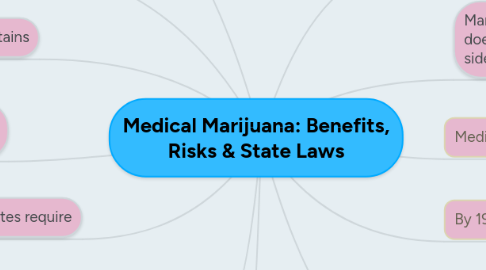
1. It can be smoked
1.1. vaporized
1.1.1. ingested in a pill form or an edible version
1.1.1.1. can be added to foods such as brownies
1.1.1.1.1. cookies and
2. Marijuana contains
2.1. 60 active ingredients
2.1.1. known as cannabinoids.
3. The body naturally makes
3.1. its own form of cannabinoids
3.1.1. to modulate pain
3.1.1.1. Abrams said.
4. In a placebo-controlled
4.1. 2007
4.1.1. study in the journal Neurology
4.1.1.1. Abrams and his colleagues
4.1.1.1.1. found that marijuana
5. All the states require
5.1. a doctor’s approval
5.1.1. and all but
5.1.1.1. Washington State
5.1.1.1.1. require an ID card
6. Many of the states
6.1. that allow
6.1.1. medical marijuana
6.1.1.1. have an online application process.
7. Name: Cindy Katherinne Tovar Zapata Code: 902152106
8. Medical marijuana
8.1. is legal
8.1.1. in 23 states.
9. By 1937
9.1. the Marihuana Tax Act [sic] imposed such high taxes on physicians prescribing cannabis
9.1.1. retail pharmacists selling cannabis
9.1.1.1. and those cultivating medical cannabis that it essentially fell out of favor as a treatment.
10. Medical marijuana
10.1. is available
10.1.1. in several
10.1.1.1. different forms.
11. Marijuana does have side effects
11.1. THC binds to cannabinoid receptors
11.1.1. which are concentrated
11.1.1.1. in areas of the brain
11.1.1.1.1. associated with thinking
12. The effects of marijuana
12.1. can interfere with attention
12.1.1. judgment and balance.
